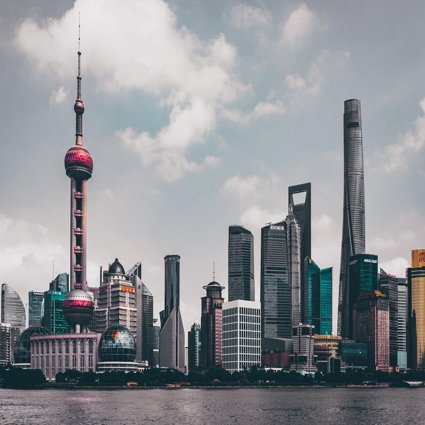
Mobile China
This lesson looks at the geographical processes behind why 100 million rural migrants arrived in Chinese cities during the last decade and why 300 million country dwellers will migrate to Chinese cities over the next ten years, with three million currently settling in Shanghai every year!
Key questions
What are the causes of rural to urban migration?
What is the resulting scale of the urban growth?
What is the impact of migration on the migrants and their families?
China's economic development and rapid urbanisation have increased the number of people moving within the country, largely from rural areas to towns and cities, in search of job opportunities. De-collectivisation of agriculture in rural areas freed people to seek work farther afield to the cities and newly industrialised areas in the east to work on construction sites or in factories.
As a result of internal migration China's urban population rose from roughly 170 million in 1978 to 540 million in 2004. In the late 1990s China's cities had attracted close to 100 million rural migrants most of whom were short term labourers rather than long term settlers. The number of internal migrants in China is estimated at over one-tenth of China's population of 1.3 billion. Rural migrants now account for 40% of the urban labor force. Although Shanghai has a negative birth rate the number of migrants moving from rural areas is set to increase the city's population rapidly.
China hopes to entice 200,000 overseas Chinese to return home in the period 2006 to 2010 by setting up science centers where they can carry out their work. In 2005 only a quarter of the Chinese who studied aboard returned to China. The government is offering more favorable policies for returned scientists who want to launch start-ups by creating some 50 special technological incubation centers over the five-year period.
China's domestic tourism market makes up more than 90% of the country's tourism traffic, and contributes more than 70% of total tourism revenue. In 2002, domestic tourists reached 878 million and tourism revenue was US$46.9 billion. The five days per week and long vacation schemes have increased leisure time for the Chinese people and spurred market demand in domestic tourism and led to its prosperity.
Starter
Did you know? 100 million rural migrants arrived in Chinese cities during the last decade and why 300 million country dwellers will migrate to Chinese cities over the next ten years, with three million currently settling in Shanghai every year!
Look at the data for the main urban areas and the map of the main cities in China. The number and size of the cities in China is quite amazing! Can you work out the rate of change in the major cities?
Main Activity
Read or listen to a reading of the Rural to Urban Migration - Mind Movie.
Describe in pairs what you ‘saw' in the rural setting and then in the urban setting. Compare accounts.
Take a snapshot from the story and draw an annotated sketch.
The annotations should include statements of fact about objects and people as well as statements about how the people involved might be feeling.
Other useful resources: Henan Map.
Plenary
Use the urban migrant data to consider the question: Are the temporary migrants likely to return to their villages after a few years or stay in the city for the rest of their lives?
In China, people registered as ‘rural' cannot permanently move to the cities. They have to get a temporary residents visa. Without it, they risk being sent back to their village or being sent to prison. Without it, they have no rights or benefits in the city.
File nameFiles
File type
Size
Download